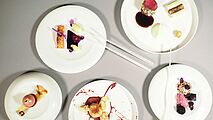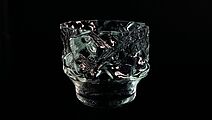M.A. in Product Design and Design of Porcelain, Ceramics and Glass
Master's course, Prof. Karin Schmidt-Ruhland, provisional Head of Department, Telephone +49 (0)345 7751-821
Professor Laura Straßer, T +49 (0)345 7751-820
Artistic assistants Larissa Siemon, siemon@burg-halle.de and Susann Paduch, paduch(at)burg-halle.de










Application deadlines
The closing date for online registration for application for the master’s course is 15 May for the following winter semester.
Further information on application
Location
Design Campus, ‘Saalewürfel’
Neuwerk 7, 06108 Halle
Contact
Burg Giebichenstein University of Art and Design Halle
Office for Student and Academic Affairs
P.O. Box 200252
06003 Halle/Saale
Germany
Telephone +49 (0)345 7751-532
Fax +49 (0)345 7751-517
Bachelor’s discipline
Product Design and Design of Porcelain, Ceramics and Glass M.A.
The educational profile of the master’s course in Product Design and Design of Porcelain, Ceramics and Glass combines the skills of conventional product design with innovative strategies and the techniques of studio design and applied art – in other words: “Working like a craftsman – thinking like a designer”.
The focus of the course of study is the refining of materials-related design and presentation skills, with an emphasis on fine ceramic materials – mainly porcelain – and also on glass. In addition, master’s students are encouraged to develop intelligent product concepts using other relevant materials – in contexts such as tabletop, interiors or regional design, for example.
The course elements offered in the master's course are supported by a network of high-calibre practical partnerships (porcelain, ceramic and glass companies and studios) and by an equally comprehensive network of partnerships with international universities. At the Design Campus at Burg Giebichenstein, master’s students can work in an inspiring, interdisciplinary ‘microcosmos’ with a range of design disciplines with the associated workshops and labs. This course has a modular structure and is project-oriented, and it also allows students to formulate their own study goals. The aim here is to encourage the deliberate development of independent standpoints for design work in the future and of suitable start-up strategies.
